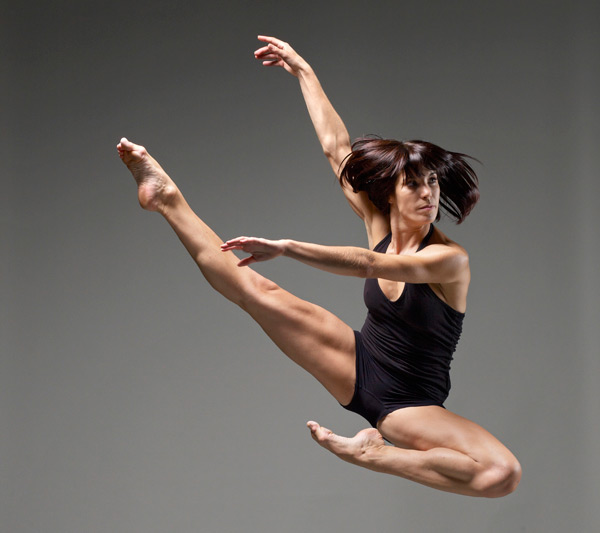 Sandrine Monin, who will be performing in Ghost Peloton with NVA & Phoenix Dance Theatre, is a professional dancer anticipating the upcoming performance of the Yorkshire Festival.
Sandrine Monin, who will be performing in Ghost Peloton with NVA & Phoenix Dance Theatre, is a professional dancer anticipating the upcoming performance of the Yorkshire Festival.
When did you begin dancing, where and why?
I started dancing when I was about 3 years old in France. I think it was kind of a love at first sight with dancing. My Mum and I went to pick up a friend at a dance school and apparently I started twirling around and imitating them. Then I just told her that I wanted to dance.
What were your early years of dancing like?
I began dancing so young that my early years dancing were mostly for fun, enjoying moving, learning routines. I started with modern dance and when I was about 7 I went to ballet classes, but then I was just having a blast dancing, regardless of any technique.
But slowly, deep inside, I kind of knew that I wanted to become a dancer, even though it seemed more like a little girl’s dream back then. But the idea stuck on and I knew I needed to start focusing on my technique.
How long have you been performing? Did you start young?
It seems like I’ve always been performing. As kid we would have a dance school show every year, then I had performances within my training and it went on until I started performing professionally five years ago.
Where did you train and what was a typical day like?
At 16, I started my vocational training in the Conservatoire National Superieur de Musique et de Danse de Lyon in France where I trained in mostly ballet, but also repertoire, partnering work and contemporary dance as well as theoretical subjects (history of dance, anatomy, music) from 9am until 6pm. Meanwhile I carried on with my academic studies at home through a distance learning organisation.
After I graduated at 19 I wished to extend my skills in contemporary dance. I moved to Germany and entered the Dance Apprentice Network aCross Europe where I worked with choreographers such as William Forsythe and Wayne McGregor. There I kept working on my contemporary and ballet training and was opened up to theatre and new technologies used.
What is a typical day like now?
Now as part of a company, my day officially starts at 10am with an hour and fifteen minute class, but I would always be in the studio at least half an hour earlier to warm up. Then we have rehearsals until 5.30pm, with one hour lunch break. In rehearsals we learn and create new pieces or work on existing ones, getting ready for the next performance to come.
How do you keep on top of your technique?
I take class every working day, contemporary or ballet according to which teacher we have. In the company we consider classes an integral part of the training and not just warm up. So everyday class is a way to improve your technique. In rehearsals, we are pushed to never be comfortable in a piece and to always challenge our own limits. We are also encouraged to try and use other techniques (yoga, pilates, gyrokinesis) and we go to the gym to build strength and stamina.
What would you say was your greatest achievement to date?
I’m just thankful to be able to live of my passion. And at the risk of being cheesy I’m glad I realised that little girl’s dream.
Which part of dance do you enjoy most?
My favorite part is definitely being on stage. It’s such an exquisite feeling to get into a character, abstract or not, and show its story to an audience. I also love how any new piece forces you to rise to a new challenge.
What advice would you give to someone aspiring to be part of the dance industry?
I think first of all you have got to love it. It’s a hard and competitive world and sometimes it feels unreachable but don’t give up.
Then, just be curious, make your own research, watch as many shows or videos as you can, surround yourself with all kind of arts. Stay open to anything, any style, don’t make preferences because you never know when it can be useful.
What’s next for you?
We are – at the moment – on tour with our new programme, but preparing the “Ghost Peloton” on the side, a performance for the departure of the Tour de France in Leeds. Then we are going to start creating a new programme very soon, so just a lot of dancing for now!
Events of the Yorkshire Festival run across Yorkshire between 28 March and 5 July 2014.
Photo Credit: Richard Moran.
 Soft tissue therapy is a method used to assist dancers in building and maintaining flexibility and facility, as well as treating injuries, in keeping the body both strong and supple. Using soft tissue therapy aids dancers in reaching their potential: sometimes referred to as massage, the technique covers such a broad range of entities the term massage cannot encompass them.
Soft tissue therapy is a method used to assist dancers in building and maintaining flexibility and facility, as well as treating injuries, in keeping the body both strong and supple. Using soft tissue therapy aids dancers in reaching their potential: sometimes referred to as massage, the technique covers such a broad range of entities the term massage cannot encompass them.
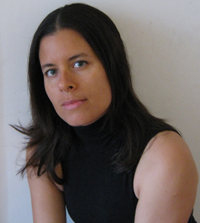 Tamara Ashley works as an artistic director, curator, academic, writer and choreographer. She is currently the Artistic Director of dancedigital and also directs the MA Dance Performance and Choreography programme at the University of Bedfordshire. As Artistic Director of dancedigital, she has led on projects such as Digital Futures in Dance and the recent dancedigital festival, with a particular focus on supporting artists in the development of their work.
Tamara Ashley works as an artistic director, curator, academic, writer and choreographer. She is currently the Artistic Director of dancedigital and also directs the MA Dance Performance and Choreography programme at the University of Bedfordshire. As Artistic Director of dancedigital, she has led on projects such as Digital Futures in Dance and the recent dancedigital festival, with a particular focus on supporting artists in the development of their work.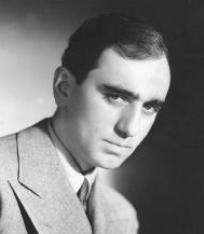 The son of an actor and actress, Busby Berkeley became a Broadway dance director in the 1920s after serving in the army during World War I. He came to Hollywood to work on films like Eddie Cantor’s Whoopee! in 1930 and turned to directing with the 1933 She Had to Say Yes and then Gold Diggers. He continued to work throughout the 1940s and early 50s, aiming to help people escape the misery of those eras, full of breadlines, depression and wars.
The son of an actor and actress, Busby Berkeley became a Broadway dance director in the 1920s after serving in the army during World War I. He came to Hollywood to work on films like Eddie Cantor’s Whoopee! in 1930 and turned to directing with the 1933 She Had to Say Yes and then Gold Diggers. He continued to work throughout the 1940s and early 50s, aiming to help people escape the misery of those eras, full of breadlines, depression and wars. Sandrine Monin, who will be performing in Ghost Peloton with NVA & Phoenix Dance Theatre, is a professional dancer anticipating the upcoming performance of the Yorkshire Festival.
Sandrine Monin, who will be performing in Ghost Peloton with NVA & Phoenix Dance Theatre, is a professional dancer anticipating the upcoming performance of the Yorkshire Festival.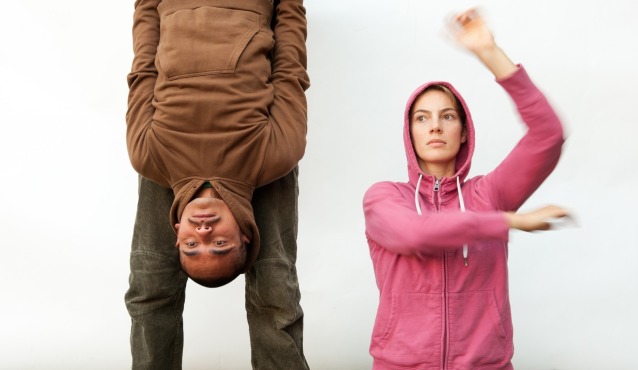 O Snap, a co-production of Het Lab Utrecht, tanzhaus NRW and supported by Take-Off: Junger Tanz Dusseldorf and Grand Theatre/Jonge Harten Theaterfestival Groningen is set to run from 22-23 May at the Unicorn Theatre in London. Aimed at participants aged 13 and above, O Snap is a dance performance about finding your own identity in an overloaded world.
O Snap, a co-production of Het Lab Utrecht, tanzhaus NRW and supported by Take-Off: Junger Tanz Dusseldorf and Grand Theatre/Jonge Harten Theaterfestival Groningen is set to run from 22-23 May at the Unicorn Theatre in London. Aimed at participants aged 13 and above, O Snap is a dance performance about finding your own identity in an overloaded world. More than 250 arts organisations are taking part in Get Scotland Dancing, part of the four-year legacy culture programme for Glasgow 2014 aimed at getting more people of Scotland up on their feet and moving to music. As a country which has a high level of obesity, the Get Scotland Dancing campaign is a fantastic initiative to encourage more people to engage with dance through the various methods of the programme of activity.
More than 250 arts organisations are taking part in Get Scotland Dancing, part of the four-year legacy culture programme for Glasgow 2014 aimed at getting more people of Scotland up on their feet and moving to music. As a country which has a high level of obesity, the Get Scotland Dancing campaign is a fantastic initiative to encourage more people to engage with dance through the various methods of the programme of activity.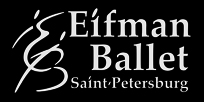 Renowned choreographer, and Artistic Director of Eifman Ballet for over 37 years, Boris Eifman talks about his latest work shown at London’s Coliseum…
Renowned choreographer, and Artistic Director of Eifman Ballet for over 37 years, Boris Eifman talks about his latest work shown at London’s Coliseum…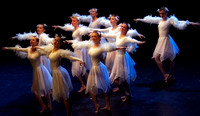 Ignition is a brand new dance festival in Kingston, delivered by the Royal borough of Kingston and supported by Arts Council England. Ignition is seeking six dance companies or choreographers to create a brand new work for a dance platform at The Rose Theatre in the borough, during the International Youth Arts Festival on 12 July. The opportunity to present a work in the festival would be notable for any choreographer.
Ignition is a brand new dance festival in Kingston, delivered by the Royal borough of Kingston and supported by Arts Council England. Ignition is seeking six dance companies or choreographers to create a brand new work for a dance platform at The Rose Theatre in the borough, during the International Youth Arts Festival on 12 July. The opportunity to present a work in the festival would be notable for any choreographer.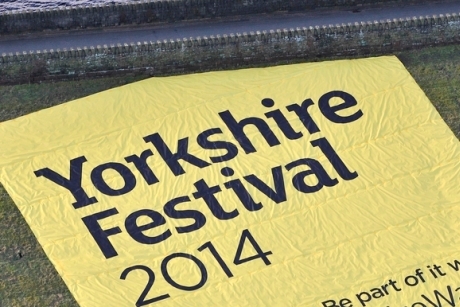 The first ever Yorkshire Festival recently got underway as the official countdown to the Tour de France begins. Yorkshire Festival 2014 is the first ever arts festival to precede the Tour de France, the world’s biggest annual sporting event: the festival will run from 27 March to 6 July 2014. Yorkshire Festival is the first cultural festival in the Tour de France’s 111 year history. The events will take place in the 100 days leading up the first two race days of the Tour, The Grand Départ, this year hosted by Yorkshire.
The first ever Yorkshire Festival recently got underway as the official countdown to the Tour de France begins. Yorkshire Festival 2014 is the first ever arts festival to precede the Tour de France, the world’s biggest annual sporting event: the festival will run from 27 March to 6 July 2014. Yorkshire Festival is the first cultural festival in the Tour de France’s 111 year history. The events will take place in the 100 days leading up the first two race days of the Tour, The Grand Départ, this year hosted by Yorkshire.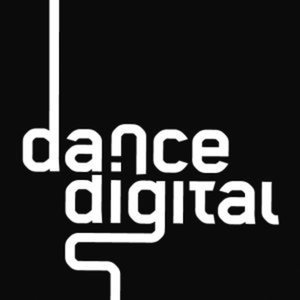 dancedigital, in partnership with the University of Bedfordshire, is to present the dancedigital Festival from 25-27 April. dancedigital is one of the UK’s leading dance organisations based in Bedfordshire and Essex, renowned for leading the dance field in the development of technical innovations in choreography and dance. In April, to celebrate the latest achievements and best work of an outstanding group of dance practitioners, the organisation will stage its first digital dance festival at the University of Bedfordshire.
dancedigital, in partnership with the University of Bedfordshire, is to present the dancedigital Festival from 25-27 April. dancedigital is one of the UK’s leading dance organisations based in Bedfordshire and Essex, renowned for leading the dance field in the development of technical innovations in choreography and dance. In April, to celebrate the latest achievements and best work of an outstanding group of dance practitioners, the organisation will stage its first digital dance festival at the University of Bedfordshire.